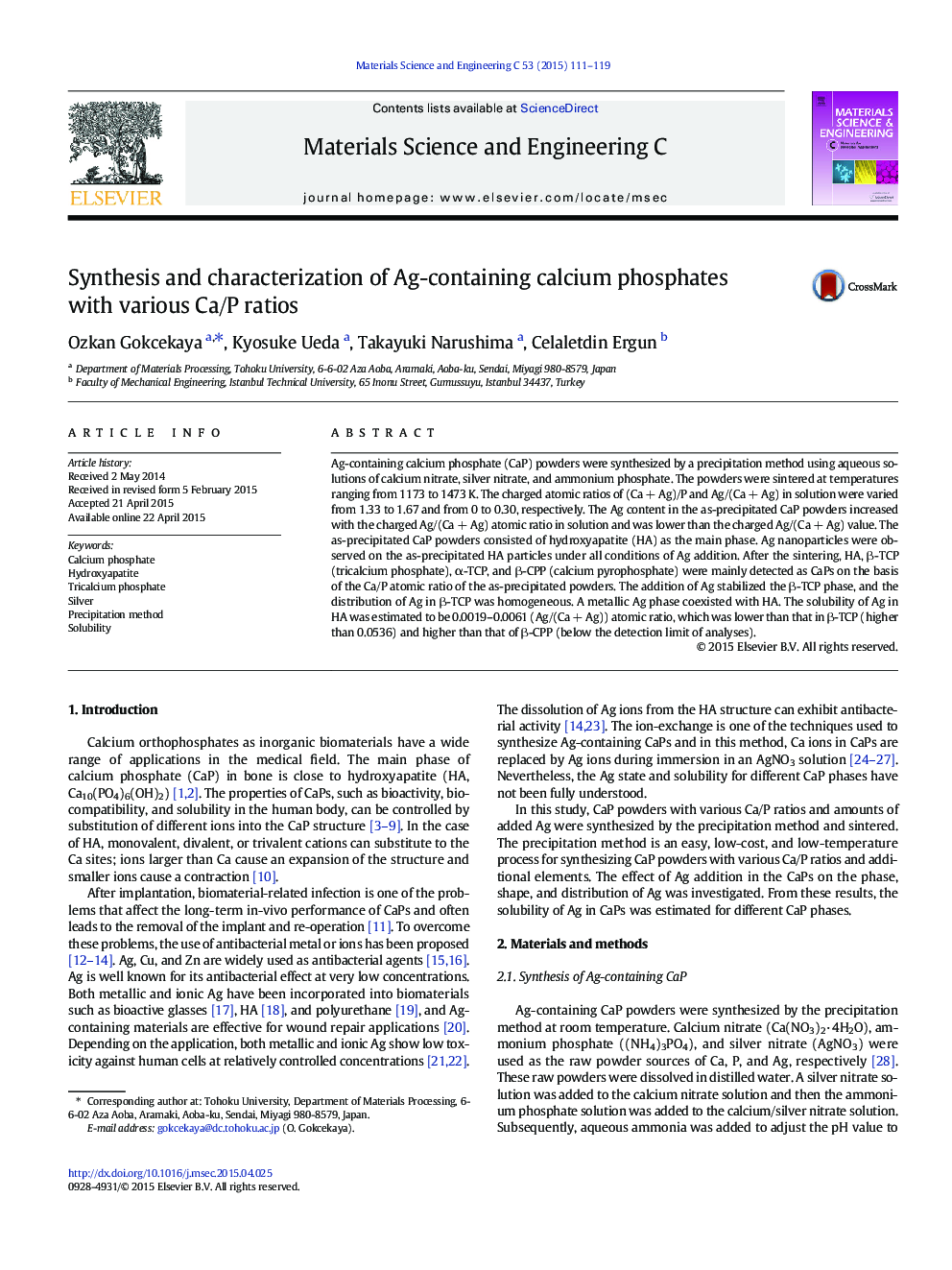| Article ID | Journal | Published Year | Pages | File Type |
|---|---|---|---|---|
| 1428086 | Materials Science and Engineering: C | 2015 | 9 Pages |
•The HA powders with Ag nanoparticles were synthesized by a precipitation method.•Metallic Ag particles were detected with the HA phase after sintering.•The distribution of Ag in β-TCP was homogeneous after sintering.•The addition of Ag stabilized the β-ΤCP phase.•β-TCP exhibited higher solubility of Ag than HA and β-CPP.
Ag-containing calcium phosphate (CaP) powders were synthesized by a precipitation method using aqueous solutions of calcium nitrate, silver nitrate, and ammonium phosphate. The powders were sintered at temperatures ranging from 1173 to 1473 K. The charged atomic ratios of (Ca + Ag)/P and Ag/(Ca + Ag) in solution were varied from 1.33 to 1.67 and from 0 to 0.30, respectively. The Ag content in the as-precipitated CaP powders increased with the charged Ag/(Ca + Ag) atomic ratio in solution and was lower than the charged Ag/(Ca + Ag) value. The as-precipitated CaP powders consisted of hydroxyapatite (HA) as the main phase. Ag nanoparticles were observed on the as-precipitated HA particles under all conditions of Ag addition. After the sintering, HA, β-TCP (tricalcium phosphate), α-TCP, and β-CPP (calcium pyrophosphate) were mainly detected as CaPs on the basis of the Ca/P atomic ratio of the as-precipitated powders. The addition of Ag stabilized the β-TCP phase, and the distribution of Ag in β-TCP was homogeneous. A metallic Ag phase coexisted with HA. The solubility of Ag in HA was estimated to be 0.0019–0.0061 (Ag/(Ca + Ag)) atomic ratio, which was lower than that in β-TCP (higher than 0.0536) and higher than that of β-CPP (below the detection limit of analyses).
